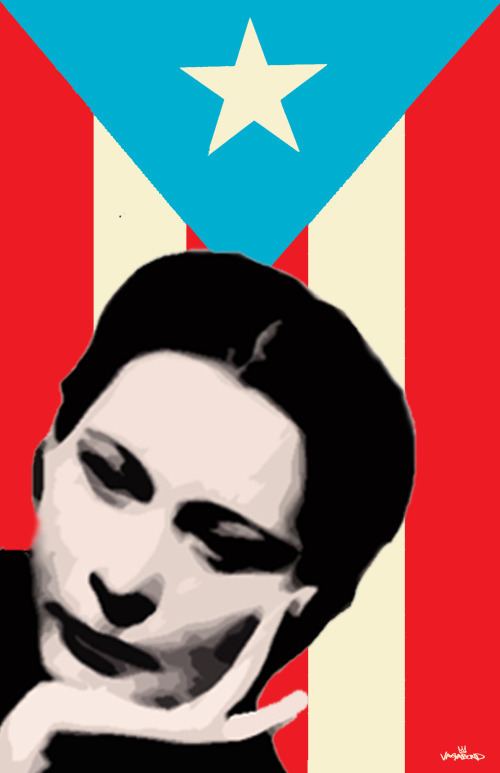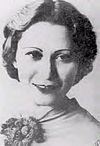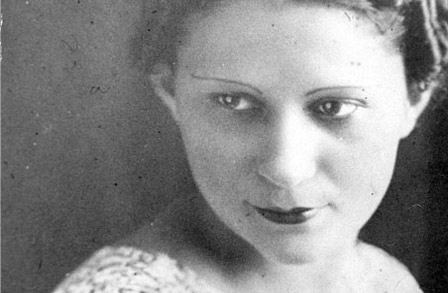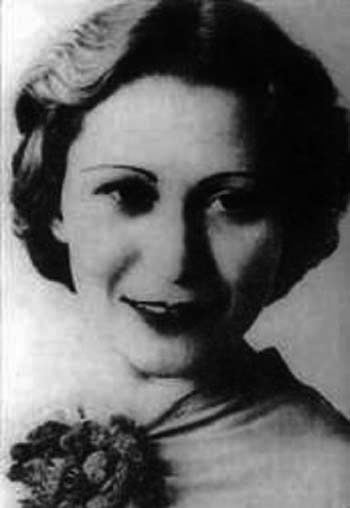Role Poet Name Julia Burgos | ||
 | ||
Literary movement Puerto Rican Independence Notable works El Rio Grande de Loiza; Books Song of the Simple Truth, Roses in the mirror Parents Paula Garcia de Burgos, Francisco Burgos Hans Similar Salvador Brau, José de Diego, María Bibiana Benítez | ||
A julia de burgos from leonard bernstein s songfest
Julia de Burgos (February 17, 1914 – July 6, 1953) was a poet from Puerto Rico. As an advocate of Puerto Rican independence, she served as Secretary General of the Daughters of Freedom, the women's branch of the Puerto Rican Nationalist Party. She was also a civil rights activist for women and African/Afro-Caribbean writers.
Contents
- A julia de burgos from leonard bernstein s songfest
- Breve biograf a de la poetisa puertorrique a julia de burgos
- Early years
- Nationalist
- Literature
- Later years
- Honors
- In Music
- Publications
- BiographicalDocumentary films
- References

Breve biograf a de la poetisa puertorrique a julia de burgos
Early years

Julia de Burgos (birth name: Julia Constanza Burgos García) was born to Francisco Burgos Hans (a farmer) and Paula García de Burgos. Although her father worked for the National Guard and farmed near the town of Carolina, Puerto Rico, where she was born, the family later moved to the barrio of Santa Cruz of the same city. She was the oldest of thirteen children, and six of her youngest siblings died of malnutrition. Her first work was Río Grande de Loíza. According to Burgos:

"My childhood was all a poem in the river, and a river in the poem of my first dreams."

After she graduated from Muñoz Rivera Primary School in 1928, her family moved to Rio Piedras where she was awarded a scholarship to attend University High School. In 1931, she enrolled in University of Puerto Rico, Rio Piedras Campus to become a teacher.

In 1933, Burgos graduated at the age of 19 from the University of Puerto Rico with a degree in teaching. She became a teacher and worked at Feijoo Elementary School in Barrio Cedro Arriba of Naranjito, Puerto Rico. She also worked as writer for a children's program on public radio, but was reportedly fired for her political beliefs. Among her early influences were Luis Lloréns Torres, Clara Lair, Rafael Alberti and Pablo Neruda.
Nationalist

In 1934, she married Ruben Rodrigues Beauchamp and ended her teaching career. In 1936, she was a member of the Puerto Rican Nationalist Party (Partido Nacionalista de Puerto Rico) and elected Secretary General of the Daughters of Freedom, the women's branch of the Nationalist Party. The Puerto Rican Nationalist Party was the independence party headed by Pedro Albizu Campos, a Puerto Rican Nationalist. She divorced her husband in 1937.
Literature

By the early 1930s, Burgos was already a published writer in journals and newspapers. She published three books which contained a collection of her poems. For her first two books, she traveled around the island promoting herself by giving book readings. Her third book was published posthumously in 1954. Burgos' lyrical poems are a combination of the intimate, the land and the social struggle of the oppressed. Many critics assert that her poetry anticipated the work of feminist writers and poets as well as that of other Hispanic authors. In one of her poems, she writes: “I am life, strength, woman.” Burgos received awards and recognition for her work and was celebrated by poets including Pablo Neruda, whom she met in Cuba, and stated that her calling was to be one of the greatest poet of the Americas.

Among Julia de Burgos' works are:
Later years
Later in life, Burgos became romantically involved with Dr. Juan Isidro Jimenes Grullón, a Dominican physician. According to Grullón, many of her poems during that time were inspired by the love that she felt for him. In 1939, Burgos and Jimenes Grullón traveled first to Cuba where she attended briefly the University of Havana and then later to New York City where she worked as a journalist for Pueblos Hispanos, a progressive newspaper.
Shortly after their arrival in Cuba, Burgos' relationship with Jimenes Grullón began to show tension. After trying to save her relationship, she instead left and returned once again to New York, however this time alone, where she took menial jobs to support herself. In 1943, she married Armando Marín, a musician from Vieques. In 1947, the marriage also ended in divorce, lapsing Burgos into further depression and alcoholism.
In February 1953, she wrote one of her last poems, "Farewell in Welfare Island". It was written during her last hospitalization and is believed by her peers to be one of the only poems she wrote in English. In the poem she foreshadows her death and reveals an ever darker concept of life.
On June 28, 1953, Julia de Burgos left the home of a relative in Brooklyn, where she had been residing. She disappeared without leaving a clue as to where she went.
It was later discovered that on July 6, 1953, she collapsed on a sidewalk in the Spanish Harlem section of Manhattan, and later died of pneumonia at a hospital in Harlem at the age of 39. Since no one claimed her body and she had no identification on her, the city gave her a pauper's burial on Hart Island, the city's only potter's field.
Eventually, some of her friends and relatives were able to trace her, find her grave, and claim her body. A committee was organized in Puerto Rico, presided over by Dr. Margot Arce de Vázquez, to have her remains transferred to the island. Burgos's remains arrived on September 6, 1953 and funeral services for her were held at the Puerto Rican Atheneum. She was given a hero's burial at the Municipal Cemetery of Carolina. A monument was later built at her burial site by the City of Carolina.
Honors
In 1986, the Spanish Department of the University of Puerto Rico posthumously honored Julia de Burgos by granting her a doctorate in Human Arts and Letters.
Cities that have honored Julia de Burgos include:
The Puerto Rican sculptor Tomás Batista sculpted a bust of Julia in the Julia de Burgos Park in Carolina. Isabel Cuchí Coll published a book about Burgos titled Dos Poetisas de América: Clara Lair y Julia de Burgos. Puerto Rican poet Giannina Braschi, who was born the year of Burgos's death, pays homage to her poetry and legend in a scene of the Spanglish novel Yo-Yo Boing!
At Yale University, the Latino Cultural Center is named in her honor, La Casa Cultural Julia de Burgos
A documentary about the life of Julia de Burgos was made in 2002 titled "Julia, Toda en mi..." (Julia, All in me...) directed and produced by Ivonne Belén. Another biopic about her life, "Vida y poesía de Julia de Burgos," was filmed and released in Puerto Rico in 1978.
In New York City, the Julia de Burgos Cultural Center, on 106th Street and Lexington Avenue, is named after her.
On September 14, 2010, in a ceremony held in San Juan, the United States Postal Service honored Burgos's life and literary work with the issuance of a first class postage stamp, the 26th release in the postal system's Literary Arts series. The stamp's portrait was created by Toronto-based artist Jody Hewgill.
In 2011, de Burgos was inducted into the New York Writers Hall of Fame.
There is a plaque, located at the monument to the Jayuya Uprising participants in Mayagüez, Puerto Rico, honoring the women of the Puerto Rican Nationalist Party. de Burgos's name is on the sixth line of the third plate.
In May 29, 2014, The Legislative Assembly of Puerto Rico honored 12 illustrious women with plaques in the "La Plaza en Honor a la Mujer Puertorriqueña" (Plaza in Honor of Puerto Rican Women) in San Juan. According to the plaques the following 12 women, who by virtue of their merits and legacies, stand out in the history of Puerto Rico. In May 29, 2014, The Legislative Assembly of Puerto Rico honored 12 illustrious women with plaques in the "La Plaza en Honor a la Mujer Puertorriqueña" (Plaza in Honor of Puerto Rican Women) in San Juan. According to the plaques the 12 women, who by virtue of their merits and legacies, stand out in the history of Puerto Rico. Burgos was among those who were honored.
In Music
The third movement of Leonard Bernstein's Songfest: A Cycle of American Poems for Six Singers and Orchestra is a setting of Burgos' poem "A Julia de Burgos". Jack Gottlieb wrote, "In angry words (sung in Spanish) she expresses her defiance of the dual role she plays as a conventional woman and as a liberated woman-poet. (Her poem antedates by two decades the women's liberation movement.) The music is sharply rhythmic, and might well be underscoring for a bullfight."
